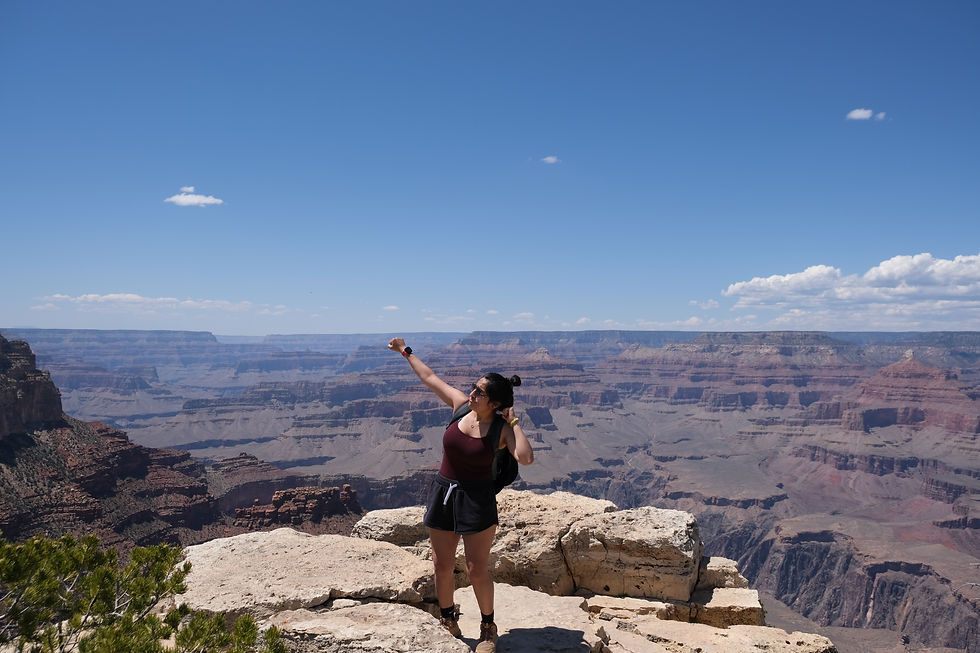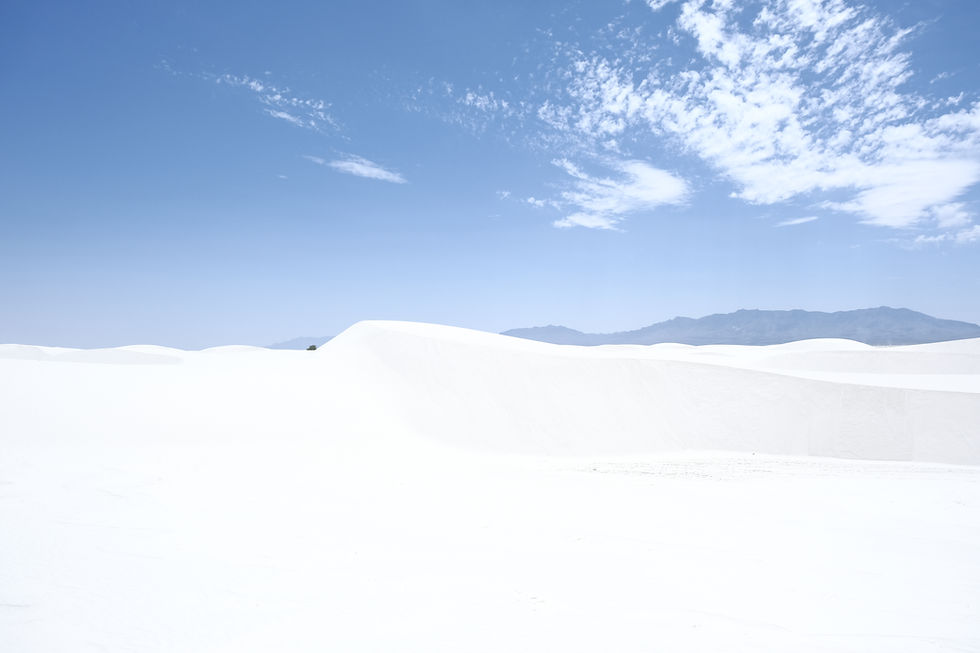Two Days in the Grand Canyon
- jocelyncuddy
- Feb 25
- 4 min read
Updated: Apr 27
If you’re like us—and honestly, like every other remote worker in the U.S.—you’ve probably caught yourself daydreaming of escaping to the dry, sun-soaked cliffs of the Grand Canyon. So, during a Southwest road trip hitting all the top national parks, my girlfriend and I made it a priority to spend two days hiking into the canyon.

The Basics of the Canyon
First, let’s break it down: the Grand Canyon is divided into two rims—the North Rim and the South Rim.
The North Rim is the road less traveled: quieter, more remote, and perfect for those looking for a rugged backcountry experience. It’s closed from mid-October to mid-May due to snow, so plan accordingly if it’s on your list.
The South Rim is where most people go, and for good reason. It’s open year-round, easily accessible, and home to nearly 90% of all Grand Canyon visitors. It’s the version of the canyon you see in postcards and desktop wallpapers. But don’t let its popularity scare you off—the South Rim is popular because it’s breathtaking. Keep in mind, though, that getting from the South Rim to the North Rim takes about five hours by car. If you're looking to do both, split it into two separate trips.
Since my girlfriend prefers more populated trails (fewer chances of crossing paths with rattlesnakes—valid), we stuck to the South Rim for our adventure.
Where to Stay
We rolled into the park with our trusty campervan and camped at Mather Campground, a well-equipped and budget-friendly spot right inside the park. At just $18 per night, it’s one of the cheapest national park campgrounds out there. Pro tip: this place fills up fast, especially around holidays, so make your reservation months in advance if you can. And definitely bring along your America the Beautiful Pass to save on entrance fees.
If you’re visiting during a busy weekend like Memorial Day (like we did), know that while most spots are reserved, they do keep about 15 first-come, first-serve sites open each morning. Get there by 8:00 a.m. and you might just snag one.
The campsites come with everything you need: picnic tables, fire pits, and enough leafy coverage for a little privacy. There's even a Grand Canyon Village grocery store just minutes away with all the essentials—firewood, burgers, s'mores supplies, you name it. Bathrooms are free, showers cost a few coins, and while there are no RV hookups, campervans are totally fine to park.

Hiking the Grand Canyon in Two Days
Before you start racing down into the canyon, there’s a phrase posted everywhere that you’ll want to take to heart:
“Going down is optional; going up is mandatory.”
You don’t realize how deceptively easy it is to descend into the canyon—until you’re trying to climb back out. Over 250 people are rescued from the canyon each year, many of them because they underestimated the hike and overestimated their abilities. If your water bottle is halfway empty, that’s your cue to turn around. Don’t test your luck (or your credit card balance) on a $10,000 rescue helicopter.

Bright Angel Trail to Havasupai Gardens

On our first day, we tackled the legendary Bright Angel Trail to Havasupai Gardens. This is the hike to do if you're up for the challenge. One write-up I read before our trip said,
And it delivered.
The full hike is about 9 miles roundtrip and took us just under six hours to complete. It’s not for beginners, but it is considered one of the safest canyon hikes. Park rangers often patrol the first part of the trail, reminding folks of the risks. There are water refill stations along the way, but they’re not always functioning, so carry more than you think you’ll need.
You’ll zig-zag your way down the famous switchbacks carved into the canyon wall—steep, winding, and seemingly endless. These switchbacks test your knees on the way down and your endurance on the way back up. But with each turn, the views grow more dramatic, and the sense of scale more humbling.
When we finally reached Havasupai Gardens, we found more than just a beautiful oasis. There’s a surprising sense of camaraderie at the bottom of the canyon. Strangers instantly feel like teammates. Everyone is sharing trail tips, electrolyte powders, and encouragement. People swap stories about their hike in, and seasoned backpackers offer knowing nods to the newcomers soaking their hats in the water fountain.
And let’s talk about that red canyon dust. It’s the kind of fine, earthy sand that finds its way into your shoes, onto your legs, under your fingernails—everywhere. By the end of the hike, you’re not just tired; you’re completely coated in that iconic rust-colored layer, like the canyon leaves a little piece of itself on everyone who makes the journey.
Ooh-Ah Point via South Kaibab Trail

Originally, we’d planned to do an even tougher hike on Day 2. But after the climb out from Havasupai Gardens, our legs were toast. So instead, we opted for a short and sweet hike to Ooh-Ah Point.
Don’t let the name fool you—it’s earned. You start at the South Kaibab trailhead and hike 1.5 miles down to a viewpoint that lives up to its name. The views are jaw-dropping, and the trail gives you a quick taste of the canyon without the full commitment.
Even though it’s short, the way back up still requires effort. This is the Grand Canyon, after all—nothing comes easy.
Final Thoughts

The Grand Canyon is one of those places that stays with you. It’s not just about the scenery (though that alone is worth the trip). It’s about the conversations with fellow hikers at the bottom, the burn in your legs as you tackle the last switchback, and the layer of red dust you wear like a badge of honor.
Two days at the Grand Canyon wasn’t nearly enough to see it all—but it was enough to feel small, grateful, and completely alive. If you’re even thinking about going—go. Just be smart, pack water, respect the heat, and let the canyon do its thing.
You’ll leave a little tired, a little dusty, and completely changed.
.png)



Comments